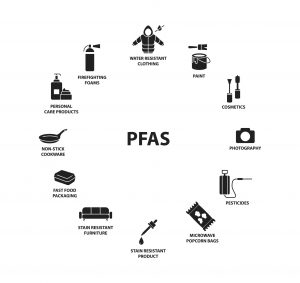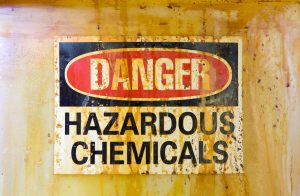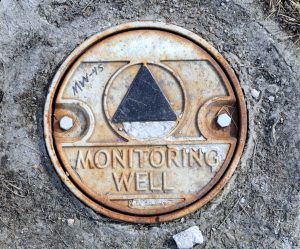 Temperatures in Arizona this week reached over 110 degrees Fahrenheit. The water temperature in the Florida Keys was reported to reach sauna-like levels, threatening the life of habitat-sustaining coral. Atmospheric conditions are routinely blamed for violent storms and for wildfires that darken the skies.
Temperatures in Arizona this week reached over 110 degrees Fahrenheit. The water temperature in the Florida Keys was reported to reach sauna-like levels, threatening the life of habitat-sustaining coral. Atmospheric conditions are routinely blamed for violent storms and for wildfires that darken the skies.
Articles Posted in Environmental
PFAS Liability and the Need for Coverage
In the last decade, per- and polyfluoroalkyl compounds (PFAS) increasingly have become the subject of actual or potential liability for a widening group of companies, with potential liability arising from both private tort lawsuits and governmental enforcement of environmental laws and regulations. In a recent Practical Guidance® Practice Note, Insurance Coverage for PFAS Liability, our colleague Tamara Bruno provides a comprehensive breakdown of this rapidly growing area of coverage need.
States Show Increased Initiative on PFAS Regulation
In North Carolina, California, Wisconsin and Illinois Sue Companies over PFAS “Forever Chemicals Contamination, colleagues Reza Zarghamee, Mark J. Plumer, Jillian Marullo, Rebecca M. Lee and Ashley L. Meredith examine the lawsuits, along with new state prohibitions and reporting requirements imposed on manufacturers and distributors of products containing PFAS, that signal increased initiative by states to regulate PFAS.
EPA Announces Increased Efforts to Require Cleanup of Coal Ash – Insurance Should Be a Component of Companies’ Response
 Early in 2021, we wrote about potential insurance implications that could arise from the then-new Biden Administration’s expected regulatory priorities. Among other things, we noted that heightened scrutiny on coal ash was expected. On January 11, 2022, the U.S. Environmental Protection Agency (EPA) confirmed that prediction, issuing a press release announcing “key steps” it is taking to “protect groundwater from coal ash contamination.” As companies with coal ash liabilities consider EPA’s new guidance and next steps, they should be aware that they may have insurance that could cover some of their coal ash cleanup costs.
Early in 2021, we wrote about potential insurance implications that could arise from the then-new Biden Administration’s expected regulatory priorities. Among other things, we noted that heightened scrutiny on coal ash was expected. On January 11, 2022, the U.S. Environmental Protection Agency (EPA) confirmed that prediction, issuing a press release announcing “key steps” it is taking to “protect groundwater from coal ash contamination.” As companies with coal ash liabilities consider EPA’s new guidance and next steps, they should be aware that they may have insurance that could cover some of their coal ash cleanup costs.
An Update on Recent PFAS Regulation and Enforcement and the Resulting Insurance Implications
 In August, we provided an overview of the recent increase in regulatory and private litigation activity around per- and polyfluoroalkyl substances (PFAS), colloquially known as “forever chemicals,” and potential insurance coverage for PFAS liability. There have been important developments on the PFAS front in the past few months. Companies with any connection to PFAS need to be cognizant of the evolving regulatory landscape and be prepared to defend against potential PFAS liability. Fortunately, insurance coverage may be available to help mitigate these fast-growing claims—including coverage under historic general liability policies.
In August, we provided an overview of the recent increase in regulatory and private litigation activity around per- and polyfluoroalkyl substances (PFAS), colloquially known as “forever chemicals,” and potential insurance coverage for PFAS liability. There have been important developments on the PFAS front in the past few months. Companies with any connection to PFAS need to be cognizant of the evolving regulatory landscape and be prepared to defend against potential PFAS liability. Fortunately, insurance coverage may be available to help mitigate these fast-growing claims—including coverage under historic general liability policies.
PFAS Enforcement and Liability Is on the Rise—Insurance Can Help
 A key component of a company’s risk management function is to keep a close eye on new and developing sources of liability and to put in place appropriate insurance to respond in the event those liabilities ripen. In recent years, there has been a significant increase in legal and regulatory attention on per- and polyfluoroalkyl substances, more commonly known as “PFAS” or “forever chemicals.” PFAS are used in countless applications, and many companies across the country bear potential liability, from chemical companies to manufacturers to retailers to corporate end users. PFAS-related enforcement is focused on remedying impacts to both the environment and human health. Importantly, a company’s liability for PFAS-related contamination or bodily injury may be covered under historic general liability policies and/or modern-day pollution liability policies. As regulation and litigation relating to these ubiquitous substances continues to surge, corporate policyholders with potential exposure should be proactive to examine their insurance portfolios and position themselves for potential insurance coverage in the event they become a PFAS liability target.
A key component of a company’s risk management function is to keep a close eye on new and developing sources of liability and to put in place appropriate insurance to respond in the event those liabilities ripen. In recent years, there has been a significant increase in legal and regulatory attention on per- and polyfluoroalkyl substances, more commonly known as “PFAS” or “forever chemicals.” PFAS are used in countless applications, and many companies across the country bear potential liability, from chemical companies to manufacturers to retailers to corporate end users. PFAS-related enforcement is focused on remedying impacts to both the environment and human health. Importantly, a company’s liability for PFAS-related contamination or bodily injury may be covered under historic general liability policies and/or modern-day pollution liability policies. As regulation and litigation relating to these ubiquitous substances continues to surge, corporate policyholders with potential exposure should be proactive to examine their insurance portfolios and position themselves for potential insurance coverage in the event they become a PFAS liability target.
Pillsbury Insurance Insolvency Watch: Legacy U.S. and London Insurers Set Claims Bar Dates for Policyholders
 In recent weeks, two insurers with significant legacies of occurrence-based general liability coverage took important steps to liquidate their estates.
In recent weeks, two insurers with significant legacies of occurrence-based general liability coverage took important steps to liquidate their estates.
Bedivere Insurance Company (OneBeacon) Liquidation
The first insurers are associated with Bedivere Insurance Company, formerly known as OneBeacon Insurance Company (OBIC). OBIC’s history stretches back to the 1800s but is most well known as the successor to the General Accident and Commercial Union families of insurers. These companies wrote many policies from the 1960s through the 2000s and include Commercial Union Assurance Company, Employers Commercial Union Insurance Company, Employers’ Surplus Lines Insurance Company, Employers’ Liability Assurance Corporation Limited, General Accident Insurance Company, and CGU Insurance Company (and many other smaller companies). OBIC stopped writing new business in 2010 and entered run-off, paying claims from its historic exposures. In 2014, OneBeacon Group, OBIC’s parent, sold its run-off business to a Bermuda entity called Armour Group. The transaction included OBIC and other subsidiaries (Potomac Insurance Company, OneBeacon America Insurance Company, and The Employers Fire Insurance Company). OBIC changed its name to Bedivere Insurance Company in 2015, and in October 2020, absorbed its subsidiaries by merger.
Is Your Insurance Program Ready for the Biden Administration?
 The Biden administration has hit the ground running with executive orders, regulatory and legislative priorities, and cabinet-level and other top posts being announced on a daily basis. Our public policy colleagues have been closely tracking many of the policy priorities of the new administration and highlighting important regulatory and legislative developments that businesses can expect coming down the pipeline.
The Biden administration has hit the ground running with executive orders, regulatory and legislative priorities, and cabinet-level and other top posts being announced on a daily basis. Our public policy colleagues have been closely tracking many of the policy priorities of the new administration and highlighting important regulatory and legislative developments that businesses can expect coming down the pipeline.
A Recent “Event” in Wisconsin: Appellate Court Rules That a Commonly Used London Market “Occurrence” Definition Is Ambiguous
 In recent years, Wisconsin generally has been a pro-policyholder jurisdiction when it comes to long-tail environmental coverage cases. That trend continues with a decision by a Wisconsin appellate court in a case involving coverage for environmental cleanup costs at a former manufactured gas plant site. In Superior Water, Light & Power Co. v. Certain Underwriters at Lloyd’s, London Subscribing to Policy Nos. K22700, CX2900, and CX2901, the court reversed a lower court and held that there may be coverage under historic policies if there was damage to groundwater during the policy period, notwithstanding that site operations had ceased years earlier. This is an important decision, as the same historic London Market “occurrence” definition was used in many policies issued to other policyholders by London Market Insurers during the same time frame. (A description of some of the unique aspects of the London insurance market can be found here.)
In recent years, Wisconsin generally has been a pro-policyholder jurisdiction when it comes to long-tail environmental coverage cases. That trend continues with a decision by a Wisconsin appellate court in a case involving coverage for environmental cleanup costs at a former manufactured gas plant site. In Superior Water, Light & Power Co. v. Certain Underwriters at Lloyd’s, London Subscribing to Policy Nos. K22700, CX2900, and CX2901, the court reversed a lower court and held that there may be coverage under historic policies if there was damage to groundwater during the policy period, notwithstanding that site operations had ceased years earlier. This is an important decision, as the same historic London Market “occurrence” definition was used in many policies issued to other policyholders by London Market Insurers during the same time frame. (A description of some of the unique aspects of the London insurance market can be found here.)
Environmental Closure Costs Are Covered! (And Are Not Ordinary Costs of Doing Business)
 Insurers have recently argued that environmental property damage claims for “closure” costs arising out of historic pollution are not covered, because the claimed damages are just “ordinary costs of doing business.” Policyholders should strongly resist denials based on this argument, which is unsupported custom and practice in the insurance industry and contradicts the terms of standard-form third-party liability policies, applicable environmental laws, and insurance law in nearly all jurisdictions.
Insurers have recently argued that environmental property damage claims for “closure” costs arising out of historic pollution are not covered, because the claimed damages are just “ordinary costs of doing business.” Policyholders should strongly resist denials based on this argument, which is unsupported custom and practice in the insurance industry and contradicts the terms of standard-form third-party liability policies, applicable environmental laws, and insurance law in nearly all jurisdictions.
 Policyholder Pulse
Policyholder Pulse


